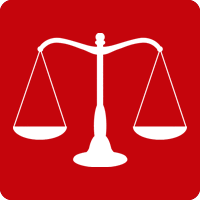Intro
Reporting Requirements
Types
Talking to
a Child
Making the
Report
Conclusion
Reporting requirements vary slightly for a few groups...
Select the affiliation that best fits you:

Mandated Reporters
by State Statute
Did you find yourself in the left column of the previous page?
If so (or if you're not sure), then choose this affiliation.

UW System
Do you work within the
UW System? *
If so, then choose this affiliation.
* As a UW System employee, you may have a role that falls into s. 48.981. If so, you must follow the "Mandated Reporters by State Statute."

Clergy
Do you hold a position within a church or other faith organization?
If so, then choose this affiliation.
Threatened Abuse/Neglect
Define
Recognize
Practice
Listen to audio
There is no statutory definition for the phrase “threatened with abuse or neglect,” so common-sense definitions are applied. “Threatened abuse and neglect” refers to behaviors or conditions the child is exposed to that are dangerous to the child and likely to result in abuse or neglect.
Remember when we were defining physical abuse — the example of the man beating his wife while their toddler hangs on to her leg? If the child is injured, it is physical abuse. If the child is not injured, it is threatened abuse, as a reasonable person could predict such behavior could result in serious injury to the child.
Threatened abuse or neglect also includes instances when someone verbally threatens to injure a child, if you believe he or she is serious about carrying out the threat.
You can download a printable copy of the questions shown below. (PDF)
Threatened abuse or neglect can be very serious.
If a report includes information that indicates a vulnerable child is in immediate danger, CPS and law enforcement respond very quickly.
The purpose of giving CPS and law enforcement agencies the authority to intervene in cases of threatened abuse or neglect is to prevent serious harm to a child, whenever possible.
Here are two examples:
- Verbal “threats,” such as “You know, sometimes I could just throttle that kid,” where it is clear someone is just making an exaggerated comment and has no intention whatsoever of following through.
- Families going through a stressful situation, like divorce, if there is no reasonable cause to suspect that abuse or neglect will occur.
Threatened Abuse/Neglect Scenarios

1) You are a gender studies instructor and you require students to keep a journal and to write about suggested topics. You review students’ journal entries periodically throughout the course. When reviewing a student’s journal, you discover that, in response to a prompt about power differentials in relationships, the student — 19-year-old Brett — has written that his father would beat him, causing welts and bruises, when Brett didn’t do something exactly as his dad wanted. Nobody could do anything right for his dad. Not even his mother. When you ask, he says he used to run interference for his 13- and 15-year-old brothers, taking the beating, but now he’s worried that without him there his brothers might be really getting it. His mother is too scared to do anything.
Are you required to report?
Correct: You are required to report.
Brett is an adult, but there are still two children in the home. Even though we don’t know if the father has beaten the other two boys, Brett has described a situation where a reasonable person would conclude that there is a real danger of that. Therefore, at a minimum, there is reasonable cause to suspect that there are children in the home who are threatened with physical abuse and who are in danger. [Although the journal is an education record, the Family Educational Rights and Privacy Act allows disclosures to appropriate persons under certain circumstances, including a health and safety emergency.]
Incorrect: You are required to report.
Brett is an adult, but there are still two children in the home. Even though we don’t know if the father has beaten the other two boys, Brett has described a situation where a reasonable person would conclude that there is a real danger of that. Therefore, at a minimum, there is reasonable cause to suspect that there are children in the home who are threatened with physical abuse and who are in danger. [Although the journal is an education record, the Family Educational Rights and Privacy Act allows disclosures to appropriate persons under certain circumstances, including a health and safety emergency.]

1) You are a doctor at Urgent Care where you see 3-year-old Aaron whose parents have brought him in suffering an asthma attack. You immediately put him on a nebulizer until his lungs open up and he can breathe easily. Both parents smoke and have been informed in the past that smoking can cause an asthma attack. You again attempt to instruct the parents about preventative care, medication and the need to provide a smoke-free environment. The parents show no understanding of the seriousness of the situation, little concern for Aaron’s health (instead they show irritation that the father had to take off of work), and no interest in learning what they have to do to prevent another asthma attack. After the parents leave with Aaron, your nurse tells you she saw them both light cigarettes in the parking lot and get into their car.
Are you required to report?
Correct: You are required to report.
A certain level of care in the home is necessary to prevent further asthma attacks which can result in Aaron’s death. All indications are that the parents will not provide that level of care. Therefore, there is reasonable cause to suspect either neglect (lack of necessary care that seriously endangers the physical health of child) or, at a minimum, threatened neglect.
Incorrect: You are required to report.
A certain level of care in the home is necessary to prevent further asthma attacks which can result in Aaron’s death. All indications are that the parents will not provide that level of care. Therefore, there is reasonable cause to suspect either neglect (lack of necessary care that seriously endangers the physical health of child) or, at a minimum, threatened neglect.

2) Samira, a student in your history class, lingers in your classroom after school and seems hesitant to leave to go home. You ask her why and she says that she has been terrified at home for the past month because her mom’s boyfriend has been getting physical with her. Although she says that nothing he has done has left a mark, she tells you that the way he has acted to her over the past weeks have gotten worse and worse and she is afraid of what he may do to her when she gets out of detention.
Are you required to report?
Correct: You are required to report.
The behavior that Samira described fits within the definition of threatened physical abuse. Although her mother’s boyfriend has not yet done something to Samira that constitutes physical abuse, because she has not been injured, the fact that he is being physical with her and that it is escalating suggests that he may physically abuse her in the future. This needs to be reported so that Samira can be protected from potential abuse by her mother’s boyfriend when she returns home.
Incorrect: You are required to report.
The behavior that Samira described fits within the definition of threatened physical abuse. Although her mother’s boyfriend has not yet done something to Samira that constitutes physical abuse, because she has not been injured, the fact that he is being physical with her and that it is escalating suggests that he may physically abuse her in the future. This needs to be reported so that Samira can be protected from potential abuse by her mother’s boyfriend when she returns home.
Make sure to visit all the tabs before continuing the course!

